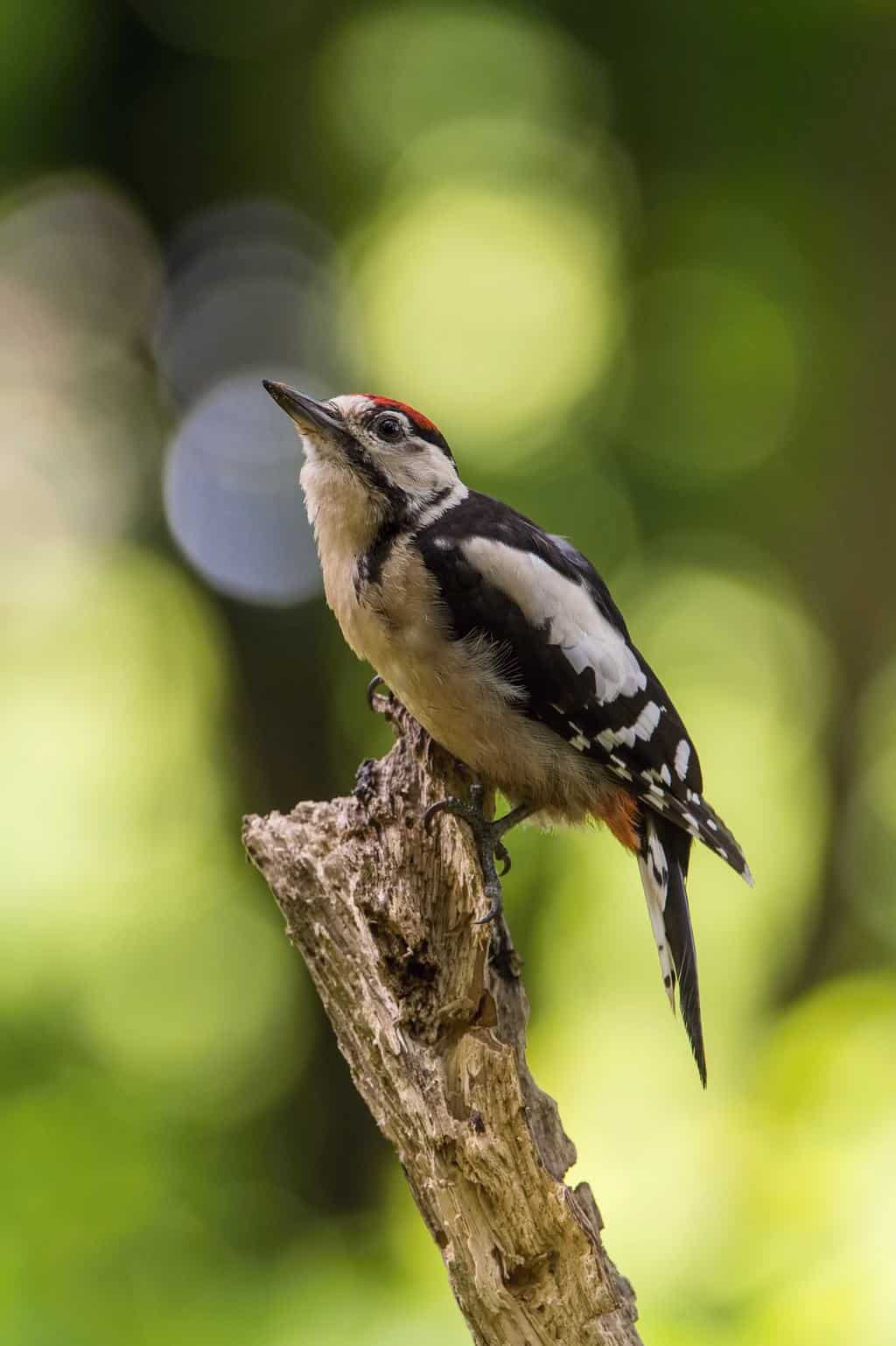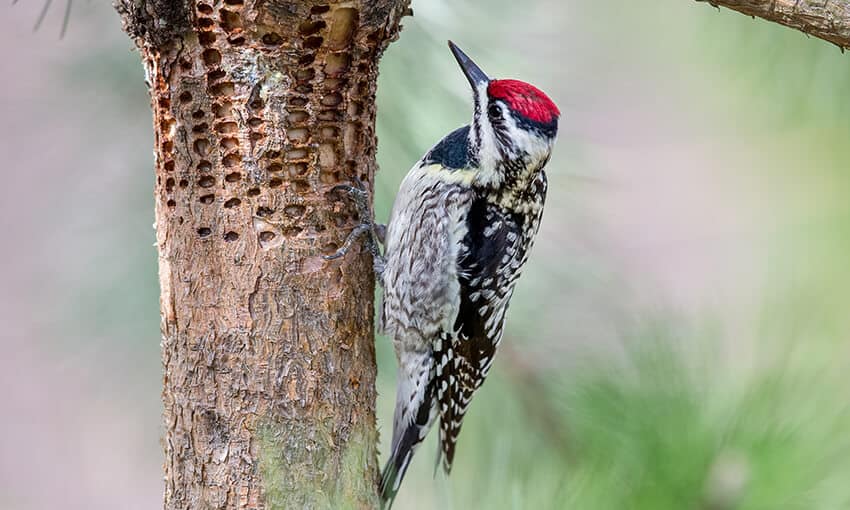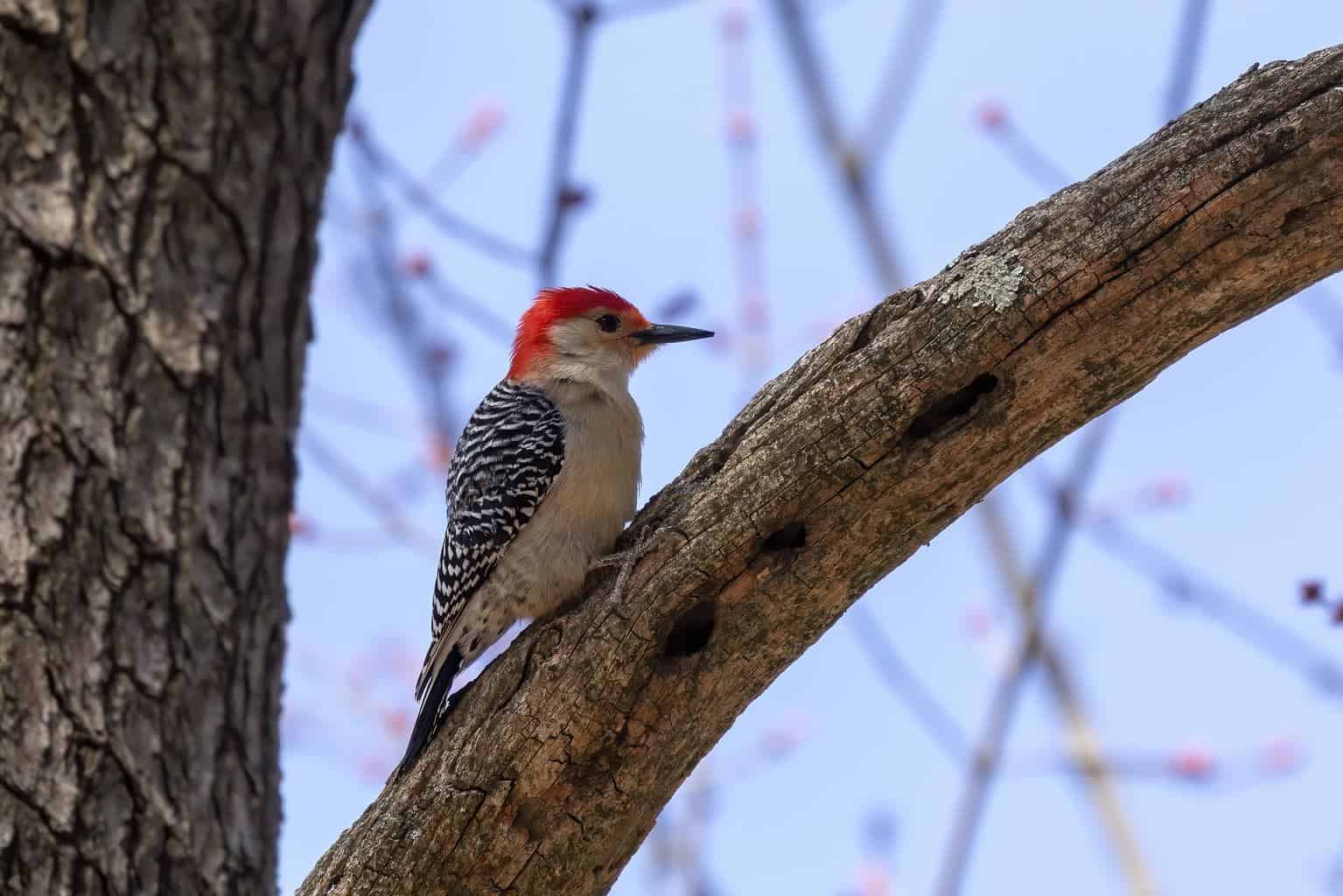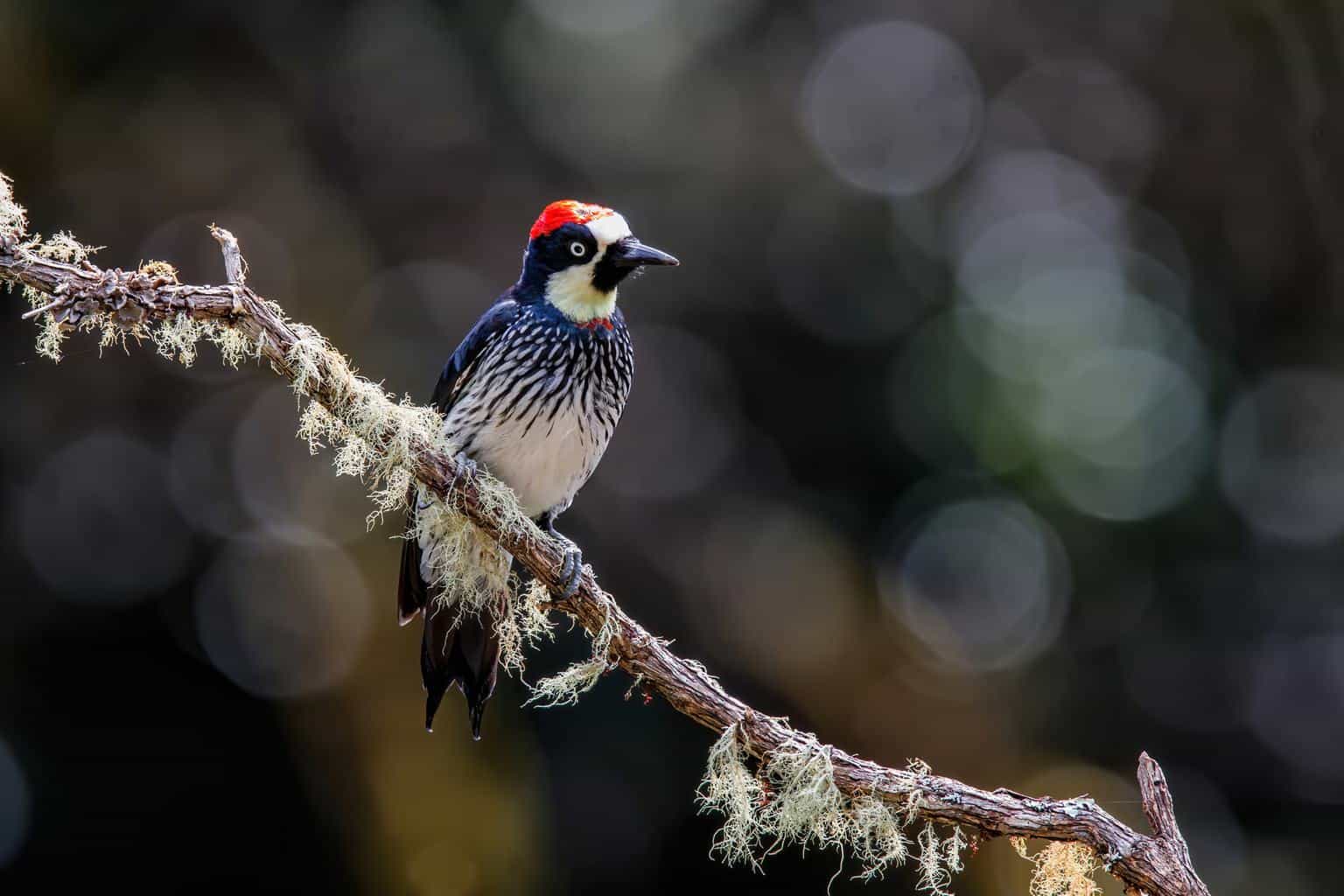Since it’s settled right in the middle of the Allegheny Mountain Range, the mountains, valleys, and hills make up most of the state of West Virginia. There are about 45 state parks and forests you can explore, which is perfect for those who are interested in bird watching.
There are currently 75 bird species found in the Mountain State, and if you’re into woodpeckers, you will be able to spot 7 species. Read on to find out all you need to know about these wonderful feathered creatures.
Downy Woodpecker

- Scientific Name: Dryobates pubescens
- Length: 5.5-7.1 inches
- Weight: 0.71-1.16 ounces
- Wingspan: 9.8-12.2 inches
The downy woodpecker is between the size of a robin and a sparrow. It has a black body with white markings on the wings and a white belly, back, and throat.
Distinguishing male and female downy woodpeckers is easy because there’s a red patch that grows at the back of the head in males that isn’t present in females.
The downy woodpecker is the smallest in North America, and it’s one of the most likely woodpeckers to visit your backyard, especially if you fill your bird feeder with suet, peanuts, or black oil sunflower seeds. When they’re in their natural habitats — woodlots, residential areas, and parks — they like to feed on beetles, ants, gall wasps, and caterpillars.
Hairy Woodpecker

- Scientific Name: Leuconotopicus villosus
- Length: 7-10.2 inches
- Weight: 1.4-3.4 ounces
- Wingspan: 13-17 inches
The hairy woodpecker is the downy woodpecker’s larger look-alike. This black and white bird is almost the size of a robin, and you can find it in woodlots, parks, open woodlands, and recently burned forests.
Hairy woodpeckers are known to follow pileated woodpeckers to forage on the insects it left behind, and it’s also likely that this species will follow sapsuckers to feed on their sap wells. And sometimes, the hairy woodpecker will search for food on fallen logs.
These woodpeckers reside in most parts of North America year-round, and it’s common for these birds to build their nests in cavities in deciduous trees in the east and dead conifers in the west.
Northern Flicker

- Scientific Name: Colaptes auratus
- Length: 11-14 inches
- Weight: 3-5.9 ounces
- Wingspan: 17-21 inches
When in West Virginia, look for the yellow-shafted northern flicker. It has yellow feathers on the underside of the wings, while the rest of the body is a silver grayish-brown with black spots and markings. The northern flicker is a relatively large woodpecker, with its size falling somewhere between a robin and a crow.
It doesn’t lean against horizontal branches to peck through the bark. It flies in an upward and downward motion. And unlike other woodpeckers, northern flickers spend most of their time on the ground, searching for ants, beetles, and other insects to eat. In the fall and winter months, these birds will also eat fruits, berries, seeds, and nuts.
A northern flicker won’t make a habit of visiting backyard feeders, but it is common to find them fluttering around a birdbath.
Yellow-Bellied Sapsucker

- Scientific Name: Sphyrapicus varius
- Length: 7.5-8.3 inches
- Weight: 1.2-2.2 ounces
- Wingspan: 13.4-15.8 inches
Just like other sapsuckers, the yellow-bellied sapsucker digs neatly organized holes in deciduous trees to feed on the sap. It also feeds on any insects that may have found themselves stuck in the sticky liquid. It makes two types of holes. The deep ones are round and too big, while the rectangular ones are shallow and should be regularly maintained for the sap to flow.
The female yellow-bellied sapsucker has a red forehead, while males have yellow or red foreheads. All birds of these species have barred backs and spend a long time on trees while feeding.
The yellow-bellied sapsucker isn’t likely to visit your backyard, but if you have young maple trees that are filled with sap, these woodpeckers might make an exception.
Pileated Woodpecker

- Scientific Name: Dryocopus pileatus
- Length: 16-19 inches
- Weight: 9-14 ounces
- Wingspan: 26-30 inches
The pileated woodpecker is big, almost the size of the crow, and except for the presumably extinct ivory-billed woodpecker, is the largest species in North America. You’ve probably seen this bird before, if not in person, then on the television, as it inspired cartoonists to create Woody Woodpecker.
Pileated woodpeckers are mostly black with white stripes and a red crest, and these birds have strong bills that allow them to dig big rectangular holes to catch all the carpenter ants. It prefers drilling into dead trees, and the nest holes it leaves are commonly used by other birds like owls, ducks, and swifts, and other animals, including bats.
Compared to those of other woodpeckers, the call of the pileated woodpecker is loud, so you may hear it long before you see it. It will likely visit your backyard if you have a bird feeder filled with suet.
Red-Bellied Woodpecker

- Scientific Name: Melanerpes carolinus
- Length: 9-10.5 inches
- Weight: 2-3.2 ounces
- Wingspan: 15-18 inches
After spotting its pale plumage, barred back, and a bright red cap, you may be tempted to lump the red-bellied woodpecker into a group with red-headed woodpeckers, but don’t be fooled; the red-headed woodpecker’s mostly black back and large white patches on its wings easily differentiate between the two.
The red-bellied woodpecker prefers to forage for larvae in dead trees and uses its sticky spit and barbed tongue to catch the bugs and larvae. It prefers to feed on branches and trunks of medium to large trees, so if you live around wood patches, you might be able to see this bird flying around.
This bird will also feed on acorns, nuts, seeds, spiders, and other birds, and lizards when food is scarce. It usually hides food in cavities so it can feed on it later. If you fill your bird feeder with nuts and sunflower seeds, you’ll definitely see it flying around your backyard.
Acorn Woodpecker

- Scientific Name: Melanerpes formicivorus
- Length: 7.5-9.1 inches
- Weight: 2.3-3.2 ounces
- Wingspan: 13.8-16.9 inches
The acorn woodpecker has a distinctive look with wide clown-like eyes and a black body. The rest of the body is white, and the woodpecker is almost the size of a robin. You can tell males from females by looking at the forehead; male woodpeckers have a red patch on their forehead, and there’s a black spot between the cap and forehead of females.
If its appearance wasn’t enough to tell them apart, its call works just as well. The black and white bird’s loud and weird laugh is quite distinctive.
The bird hides thousands of acorns in holes in oak and mixed-oak evergreen trees so it can eat them later, especially during the cold, winter months.
This woodpecker species are highly social, with males and females taking on a co-parenting system to take care of babies and young woodpeckers staying with their families for several years. They even interact well with people and will visit your backyard often.
Wrap Up
Bird watching is an amazing and entertaining activity for many, and West Virginia boasts plenty of opportunities for avid birdwatchers to catch a glimpse of their feathered-friends. If you’re a fan of woodpeckers, be on the lookout for all 7 species of these wonderful birds; you’ll definitely see them around.











